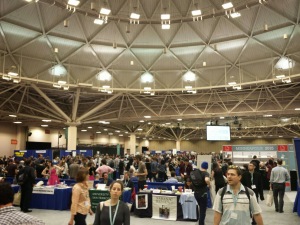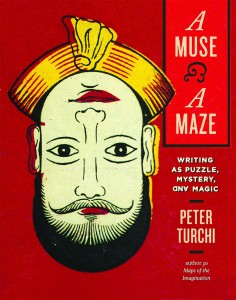#AWP15
April 17, 2015, by Sam Dinger
 If you have any writerly friends or circulate in literary circles, you probably couldn’t help but notice all the #AWP15 hashtags and selfies last week on Facebook, Twitter, and Instagram. Every year at this time the Inprint staff notices a mass exodus of writers leaving Houston for a few days to go to this thing called AWP. Last week it was Minneapolis, next year it will be Los Angeles. One wonders what AWP really is. What happens when so many writers congregate in a square mile? Is it an academically inspired conference where writers exchange thoughtful and innovative ideas, or is it just one big party?
If you have any writerly friends or circulate in literary circles, you probably couldn’t help but notice all the #AWP15 hashtags and selfies last week on Facebook, Twitter, and Instagram. Every year at this time the Inprint staff notices a mass exodus of writers leaving Houston for a few days to go to this thing called AWP. Last week it was Minneapolis, next year it will be Los Angeles. One wonders what AWP really is. What happens when so many writers congregate in a square mile? Is it an academically inspired conference where writers exchange thoughtful and innovative ideas, or is it just one big party?
We asked Sam Dinger, Inprint C. Glenn Cambor/Michael and Nina Zilkha Fellow, Inprint Poetry Busker, and MFA fiction student at the UH Creative Writing Program, to be our eyes and ears at AWP. This was Sam’s first time at AWP and here is how he breaks it down for us.
Inprint: What exactly is AWP? Who attends?
Sam: It’s pretty true to its title–Association of Writers and Writing Programs–so this year Minneapolis was crawling with thousands of people who were either writers or parading as writers, publishers, teachers, agents. Ask any Uber driver. And some of them even liked us. A kind fella who picked me up after I had spent a couple loud hours at the Hilton bar (where everyone seemed to end up) didn’t miss a beat before telling me that he loved giving rides to writers. He said he liked it when there were two of them. That way he could listen to them talk. As I type it, this sounds a little like observing an animal in its natural habitat. And I guess it is. At once, AWP seems to fulfill and complicate all stereotypes of writers. But it’s funniest when it confirms them. I was staying with my aunt and uncle in Minneapolis. And when he picked me up from the airport, my uncle asked, “Did you bring a beret?” When I made it to the convention center the next morning, there were about fifteen people outside for a smoke break, and several wore berets. Continue reading


